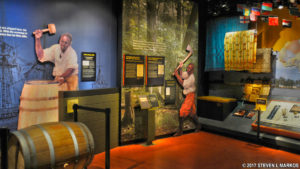
Upon visiting the African Burial Museum and reading about how many people are buried there and their traumatic pasts, I was saddened. There are 15,000 enslaved African Americans buried at the African Burial Ground. Considering their work ethic and how they are essentially the backbone of the “colony building” of America, they should be respected and honored. However, during those times African slaves were seen as property, a commodity to be bought and sold, to be used and abused. They were seen as animals, where if they were sick and couldn’t perform or be sold for anything they were just thrown off the ship that was on the voyage to America.
I enjoyed learning about how the enslaved African Americans viewed death through their artwork. Their burial was a mix of celebration, mourning, and connecting with their ancestors. They also buried their loved ones with certain possessions. It seemed almost peaceful to watch how they honored the dead as well as their ancestors and formed a community regardless of the numerous rules/ codes that were imposed on them.
Enslaved Africans had to sneak out in order to have social gatherings. This also meant that they were breaking the law, which seems outrageous to think about relative to today’s society. This really made me think about where this ideology came from that blacks are inferior to whites and what justification slave-owners had for owning and possibly raping slaves, besides it being the “norm” at the time. While slavery is abolished in the current times, it doesn’t seem that we have evolved too far from those ideologies; rather, they are resurfacing in the form of police brutality, mass incarceration, and environmental racism.
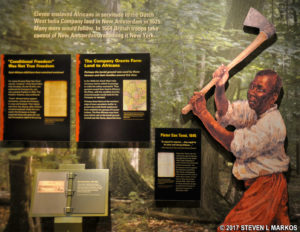

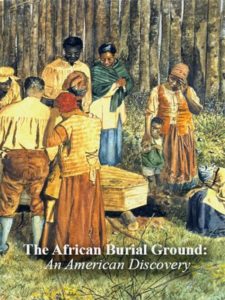

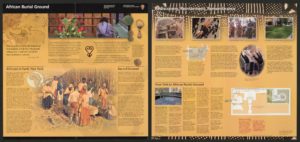




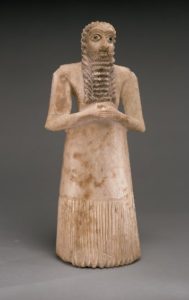 Artist: N/A
Title: Standing Male Worshiper
Date: 2900–2600 B.C.
Museum: The Metropolitan Museum of Art
As time began to progress so the idea of humanism began to form and the shift from making art that focused on deities and worshiping them to making art that worshiped humanity and focused on the ideal human body. An example of an artwork that showed the start of the transition from focus on deities to a focus on humans is the Statue of Kouros. Unlike the Standing Male Worshiper which had almost no detail on the human body, the Statue of Kouros focuses soley on the human body. It is a representation of a young nude male. The artist of this sculpture adds small but noticeable details such as the outlining of the mans abs and chest. Another faint but drastic difference between the two sculptures is the sense of movement that can be seen in the legs of the Statue of Kouros. As seen in the photograph below, the left leg of the statue strides forward giving the sculpture a feeling of movement.
Artist: N/A
Title: Standing Male Worshiper
Date: 2900–2600 B.C.
Museum: The Metropolitan Museum of Art
As time began to progress so the idea of humanism began to form and the shift from making art that focused on deities and worshiping them to making art that worshiped humanity and focused on the ideal human body. An example of an artwork that showed the start of the transition from focus on deities to a focus on humans is the Statue of Kouros. Unlike the Standing Male Worshiper which had almost no detail on the human body, the Statue of Kouros focuses soley on the human body. It is a representation of a young nude male. The artist of this sculpture adds small but noticeable details such as the outlining of the mans abs and chest. Another faint but drastic difference between the two sculptures is the sense of movement that can be seen in the legs of the Statue of Kouros. As seen in the photograph below, the left leg of the statue strides forward giving the sculpture a feeling of movement.
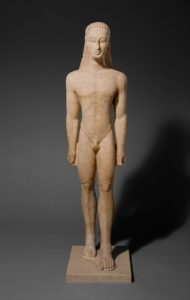 .
Artist: N/A
Title: Statue of Kouros
Date: 600 BCE
Museum: The Metropolitan Museum of Art
As more time passed the humanism movement became larger and lead to much more drastic changes in the art world. An example of a artwork that shows drastic a drastic change due to the humanism movement is the statue of Polykleitos. Similar to the statue of Kouros, the Doryphoros has a sense of movement but different to the Kouros, the Doryphoros has no symmetry. Instead the statue of Polykleitos has contrapposto. Contrapposto is the use of counter balancing to form "an asymmetrical arrangement of the human figure in which the line of the arms and shoulders contrasts with while balancing those of the hips and leg."(Google definition).By giving the statue contrapposto it the artist was able to show that the statue is suppose to represent a person walking.
.
Artist: N/A
Title: Statue of Kouros
Date: 600 BCE
Museum: The Metropolitan Museum of Art
As more time passed the humanism movement became larger and lead to much more drastic changes in the art world. An example of a artwork that shows drastic a drastic change due to the humanism movement is the statue of Polykleitos. Similar to the statue of Kouros, the Doryphoros has a sense of movement but different to the Kouros, the Doryphoros has no symmetry. Instead the statue of Polykleitos has contrapposto. Contrapposto is the use of counter balancing to form "an asymmetrical arrangement of the human figure in which the line of the arms and shoulders contrasts with while balancing those of the hips and leg."(Google definition).By giving the statue contrapposto it the artist was able to show that the statue is suppose to represent a person walking.
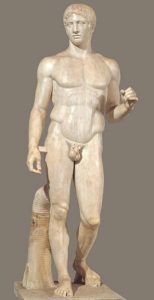 Artist: Polykleitos
Title: Doryphoros (Roman copy)
Date: 450-440 BCE
Museum: Museo Archaeologico Nazionale (Naples)
Artist: Polykleitos
Title: Doryphoros (Roman copy)
Date: 450-440 BCE
Museum: Museo Archaeologico Nazionale (Naples)


